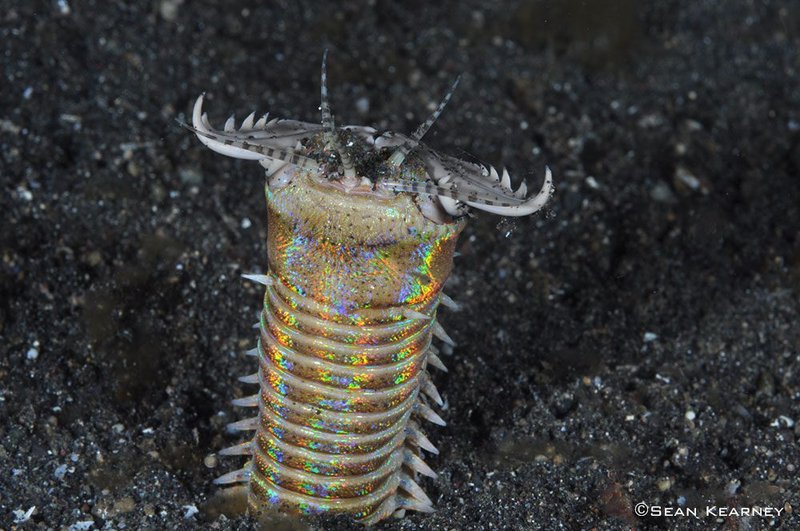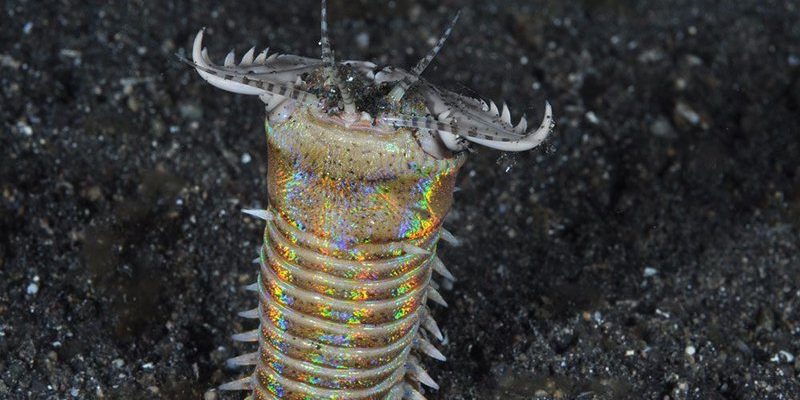
Understanding Bobbit Worm Behavior
Bobbit worms are predatory and often misunderstood creatures. They are solitary hunters by nature. When they hunt, they typically rely on the element of surprise. Picture this: a Bobbit worm burrows itself into the sand with only its head exposed, equipped with sharp, scissor-like jaws. When potential prey swims by—like fish or crustaceans—it strikes with incredible speed, grabbing its meal in seconds. This hunting strategy makes them effective lone hunters as they have a high rate of success when operating solo.
It’s fascinating to note that the Bobbit worm’s ambush technique is a major factor in its survival. They depend on their excellent camouflage and quick reflexes. This kind of solitary hunting doesn’t just highlight their predatory skills; it also speaks volumes about their adaptability. When you think about it, being a solo hunter in the vast ocean can be a risky venture, but for Bobbit worms, it’s a way of life they’ve perfected.
Why Solitary Hunting Works
You might be asking, “Why do Bobbit worms prefer to hunt alone?” The answer lies in their hunting style. Each Bobbit worm has its own territory and generally stakes out a specific area of the ocean floor as its hunting ground. Working solo means they don’t have to compete for food or territory with others. This strategy reduces the chances of conflict, allowing them to thrive in their environment.
Moreover, hunting alone gives Bobbit worms the freedom to execute their ambush tactics without interference. When they strike, they use their powerful jaws to quickly capture prey, making every hunt efficient. In comparison to group hunting, where coordination is key, a lone Bobbit worm can act swiftly and unpredictably, making it harder for prey to escape.
Are There Any Exceptions?
While Bobbit worms are primarily solitary hunters, there are instances where you might find several of them living in close proximity. This doesn’t mean they hunt together; instead, they tend to keep to their own burrows, leading separate lives. Think of it like neighbors who don’t really hang out but still share the same street.
In environments rich with food, multiple Bobbit worms can coexist. Their territories might overlap slightly, but each worm typically avoids direct confrontation. This strategy allows them to take advantage of an abundance of resources without the need to team up. So, while it’s interesting to see them together, it doesn’t change their fundamental hunting behavior.
The Role of Camouflage in Hunting
Camouflage is crucial for Bobbit worms as it helps them blend into their surroundings. Their bodies can be colored in hues that match the sandy ocean floor, making it nearly impossible for prey to spot them. When hunting, the worm’s head peeks out, almost like a fishing lure waiting for an unsuspecting victim to swim by.
This stealthy approach allows them to conserve energy. Instead of chasing prey, which can be exhausting and often futile, Bobbit worms lie in wait. Their excellent camouflage also serves to protect them from larger predators. If they’re hidden well, they can avoid being seen, allowing them to focus on their main goal—capturing prey.
Bobbit Worms’ Diet and Prey
So, what exactly do Bobbit worms eat? Their diet mainly consists of small fish, crustaceans, and other marine organisms. When they capture prey, they use their sharp jaws to tear it apart. Unlike some predators that might hunt in packs for a large meal, the Bobbit worm’s strategy is to catch whatever swims too close to its burrow.
This method means their diet can be quite varied, depending on what comes within their striking distance. You could say they’re opportunistic eaters, always ready for an ambush. When you consider the range of their prey, it’s easy to see why hunting alone works for them.
In the wild ocean depths, Bobbit worms are masters of their environment. They hunt alone, using a solitary and efficient method that doesn’t require a team effort. This lifestyle suits them perfectly, allowing them to thrive and adapt to the challenges of the underwater world.
You might not have guessed it, but Bobbit worms are fascinating creatures that remind us of the complexity of nature. Their hunting habits reflect the beauty of being different—where some creatures thrive in groups, others find success in solitude. So next time you think about the ocean and its intriguing inhabitants, remember the lone Bobbit worm, stealthily waiting for the perfect moment to strike.

